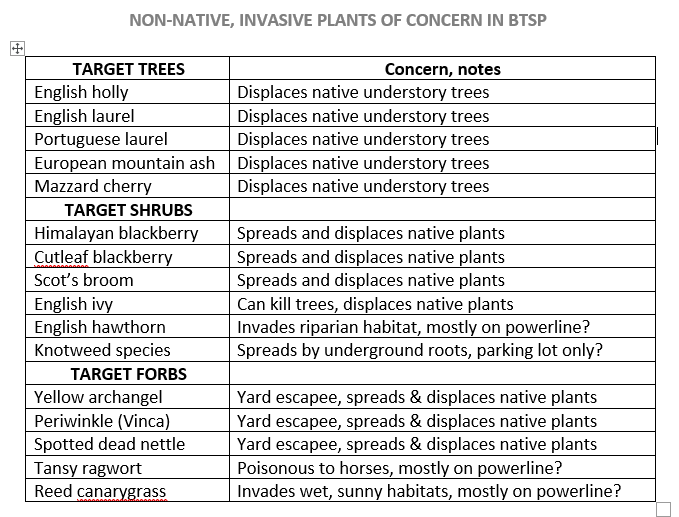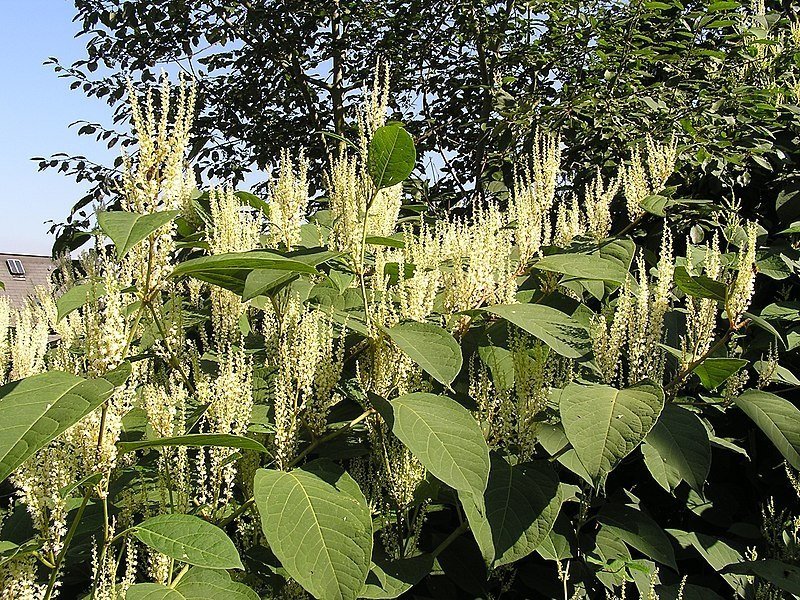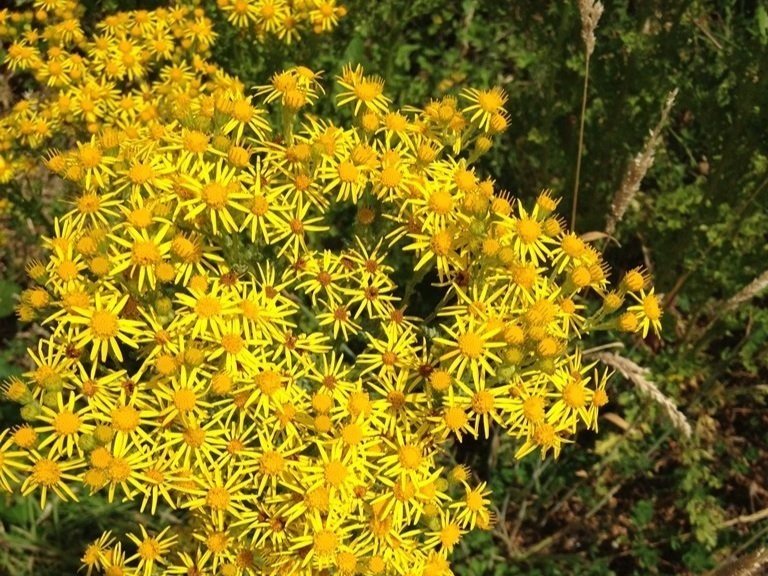Citizen Science: Mapping Invasive Plants in the Park
This project focuses on mapping the invasive species of most concern in the park, primarily to provide maps for the Park Ranger and volunteers to plan efforts to control these noxious species.
The Concern with Invasive Plants
Some non-native, invasive plants in natural areas and forested parks like Bridle Trails State Park displace native species that are important to the ecological integrity of the community. If not controlled, these noxious invasive species can spread and do more damage to the native plant community. When native plants are lost, so are resources for animals that depend on them.
American Robin with English holly berry.
Certain invasive trees, like English holly, can spread fast and outcompete native conifers in the forest understory that are needed to regenerate the future forest after the canopy trees die. Many of these invasive plants come from nearby yards and gardens, then “naturalize” (establish) in local parks. Holly enters parks in that way, and English laurel, used for hedges by many homeowners, does the same. Both are spread by birds that eat the berries and poop out the seeds in other areas. Many other invasive plants can spread into the park and displace trees, shrubs, or herbaceous species.
There are many more non-native invasive plants found in the park (about 62 species) that are not targeted in this study (16 species). Many of these other species, such as herb Robert and creeping buttercup, are so widespread as to be impossible to control. Some do not, as yet, present a serous ecological threat to the park because of their limited occurrence or presence only in disturbed areas.
How Do I Use iNaturalist for this Project?
iNaturalist is a free app for your phone that can be downloaded from an app store. You will need to set up an account, if you don’t already have one.
To join the project, you will need to email us at citizensciencebridletrails@gmail.com with the iNaturalist username you wish us to use for the project.
Once we add you to the project, any observations of invasive plants that you make that meet the criteria for the study will automatically be included in the project and can be seen on the iNaturalist project page.
Project Criteria:
The observation must be made within the park
It must be an introduced (non-native) species on the project target list (below). Note: the target species list may change over time, as we receive feedback from users.
The observation must include a photo of the plant.
It’s easy and super fun, and there is no specific, minimum time commitment - join us!
TARGETED SPECIES
For identification assistance and more information about the species, click on the photos below.
You will be taken to King County’s noxious weed resource pages or another web page.
Photo credits: Kingcountyweeds.com, Jim Erckmann, Wikimedia Commons, Flickr

















